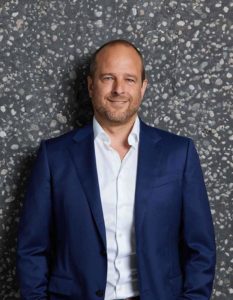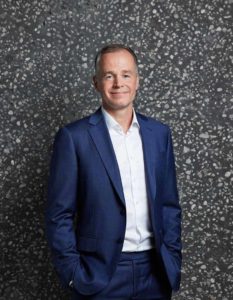The Nordic Energy Market Outlook
How will the Nordic Energy Market develop? Haavind had a talk with energy market expert Harald von Heyden.
The Energy industry is currently in a situation where “old world” and “new world” views collide, and it is undergoing an unprecedented upheaval and restructuring. The result will be that the future winners in the energy landscape will look very different from existing incumbents.
How will the Nordic Energy Market develop? Haavind had a talk with energy market expert Harald von Heyden.
The Energy industry is currently in a situation where “old world” and “new world” views collide, and it is undergoing an unprecedented upheaval and restructuring. The result will be that the future winners in the energy landscape will look very different from existing incumbents.
Energy companies are facing increasing economic and environmental pressure to cut costs (low energy prices), reduce CO2 emissions and limit occupation of land mass through new grid lines and power plants. While the “old world” utilities of today still generate and distribute electricity the same way they have for the past 100 years, successful new entrants deliver customers renewable, distributed and low marginal cost electricity, (e.g. solar and wind) that can even be generated at home or at their business. Any excess production can be stored (in a battery or as gas), or sold back to the grid, all controlled through advanced software. This has an increasing impact on the energy trading business and the business model of the traditional energy companies.
A major shift in the industry
To get first-hand market insight and learn more about the shift in the industry, we spoke to Harald von Heyden, a highly experienced industry expert and member of the Board of Directors at Statkraft. Speaking as a private person, von Heyden brings valuable insight to the discussion.
According to von Heyden, “we will see some utilities and energy majors that will be able to adapt quickly and profit from the changing situation.
Although the retreat of the “old world” will not be easily predictable, it is pretty likely that 20 years from now, we will not be burning much coal or diesel for electricity, nor will a majority of the new capacity installed be centralized”.
von Heyden explains this with the ongoing processes in the competitive market: “Not only will there be a shift due to government intervention, but technology and market developments will finish what the politicians started; making distributed and/or renewable energy sources cheaper and more practical”.
In the scenario described by von Heyden, future winners can be predicted, and chances are high that they will deliver a combination of:
- Greenhouse gas emission reductions
- Better customer satisfaction/interaction (apps/social media/autonomy/software)
- Energy efficiency and load management through new technology
- Enablers for successful integration of small scale/distributed/storage assets/electric cars.
In light of these developments, where do you see energy trading going?
“I believe that in this new world, energy trading (especially short term optimization) will still play a major role. Depending on key regulatory, technological and market design developments it could play a leading role, due to increased penetration of non-controllable production and markets that go from energy constrained to capacity constrained, raising awareness of smart grid and capacity management.”
All major traditional energy commodities (oil, gas, coal & power) will still have to be produced, traded, transported and consumed in vast quantities for decades to come, subject to significant volatility in absolute and relative value. “But here as well, we can expect that much value will be created from becoming more distributed and locally focused on a smaller scale”, von Heyden continues.
“As consumers turn into “prosumers”, they will consequently turn into traders.
There are also developments in software and social media enabling “prosumers” to participate in the energy markets online and automatically, and some innovative entrepreneurs will crack this code. This will yield large value creation opportunities for highly skilled aggregators, traders and investors.”
The Silicon valley tech-investment guru Marc Andreesen is famous for stating in 2011 that “Software is eating the world”, and indeed we see that modern firms and their operations are becoming software-driven, software-managed and even software-defined as they also become generally more digitized and automated.
Energy Management Solutions – a growing market
Firms that can offer software and automated solutions to the major problems facing utilities today have a bright future as suppliers and partners, not only to traders, portfolio managers and wholesalers, but to small scale producers, grid companies and TSOs as well. von Heyden also points to other well-known disruptive trends that will affect the energy market, including the growth of Advanced Metering Systems (AMS), “The internet of things”, Big data and Artificial Intelligence (AI), cloud computing and “software as a Service”. According to Fortune Magazine, already over 400 companies — including giants such Schneider Electric, Siemens, Google, Johnson Controls and EnerNOC — compete in the sub segment “Building Energy Management Systems” (BEMS), and Navigant Research projects the global BEMS market alone to reach $5.6 billion in 2020, up from $1.9 billion in 2011.
Energy intelligence software platforms that measure billions of data points monthly and use data analytics to deliver actionable insights are proliferating, and 70% percent reported that they plan to integrate building automation systems into one platform, with a third planning to do so within the next 12 to 18 months [Echelon].
How will this affect energy prices?
Harald von Heyden sees that the increased competition introduced by the abovementioned factors will lead to lower margins and lower volatility. “We could be facing a situation where the adoption of BEMS and Home Energy Management Systems (HEMS) is accelerating so rapidly, that many of the hourly electricity price spreads and much of the volatility in energy markets is “managed away”, thus leaving less margins and less potential to profit from demand and supply flexibility.”
“I think however, that this development is still some years away, but when it comes, it will lead to a fierce competitive landscape that forces future winners to work relentlessly at being recognized as technology and cost leaders.”
Understanding regulations and timing essential to succeed
von Heyden points to the key external risk factors being of a regulatory nature. “While most European national governments and the EU in general are positive to the developments, it seems clear that technology and the market have moved faster than lawmakers and regulators have been able to grasp. Although catching up, the outcomes are not always predictable, rational nor stable. The result is too often a “quick initiative”, followed by backtracking, leading us to expect regulatory surprises.”
von Heyden continues by observing that the key to success is to understand the way power markets, (especially short term physical), are regulated. In addition, understanding national grid codes, renewable support mechanisms, distribution codes and taxes, and anticipating future regulatory developments will be of importance. “This is best achieved by presence and activity in relevant markets, and by participating in regulatory workgroups, industry associations and retaining Haavind of course”, he adds with a smile.
“It is good to be at the leading edge, but not good to be at the “bleeding edge” (i.e. ahead of your time)”, Harald continues.
He thinks that many of these developments will take longer to materialize than anticipated, and that some will meet an immature market. “It will therefore be wise not to invest too heavily, until the market is considered ripe for the picking”.
What about environmental concerns?
”Despite positive progress, with e.g. renewable technologies wind and solar delivering stronger growth than anybody had expected even a few years ago, the bad news is that global GHG emissions most likely will remain too high to exempt us from many of the damaging consequences of global warming. We will therefore, unfortunately, also be forced to invest in damage control, abatement and remedies such as flood protection, extreme weather proof buildings, artificial irrigation and fresh water production, in addition to developing more energy efficient indoor cooling, in order to cope with the environmental challenges ahead”, Harald von Heyden concludes.
Finally, what role will the Nordic market have, given the developments discussed?
“The Nordics have had a leading role in the electricity industry for a long time, even in a global context. Our high share of renewables, leading role in the implementation of free power markets and exchanges, and pioneers in wind and solar such as Vestas, REC, Scatec Solar, and of course Statkraft, as the largest European producer of Renewable electricity are some contributing factors”, von Heyden comments. He is also very confident that the Nordics will continue to be leading edge, and several interesting software companies are already preparing for internationalization. Furthermore, he adds, “we will continue to take advantage of the special nature-given opportunities we have in terms of building new low cost hydro and wind capacity.”
Harald believes we will see a high volume of investments in new renewables over the next couple of years, and that warnings of this leading to overcapacity have already been issued.
“I am, however, not worried about overcapacity in Renewable electricity, a commodity that the world needs.
Although there might be a temporary supply glut, reflected in lower future power prices, this will pass as we build new cables to Germany, England and the Baltics, as Swedish nuclear power stations close (sooner rather than later), and because we will continue to attract new consumption from developments within data centers and new aluminum smelters.”

